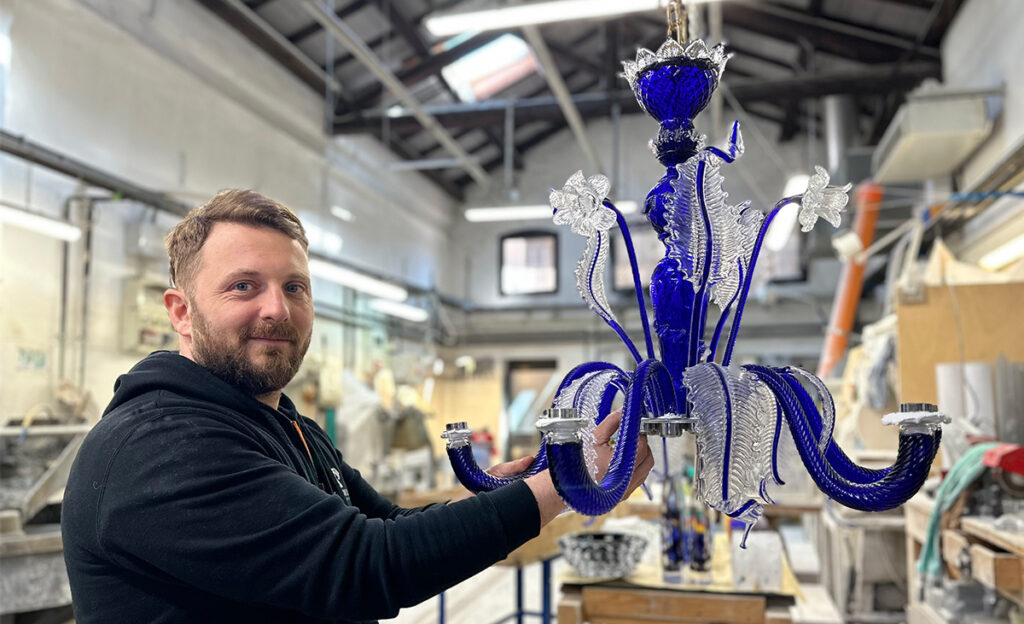Can you describe your experience in the Murano lighting industry?
I have been working in this field for 20 years. I started with packaging at Venini and then continued with Gino Cenedese in glassblowing. After that, I worked at Murano Gallery for 7 years, where I specialized in assembling chandeliers. I also had another experience in the lighting industry off the island and have been working at Wave for four years, where I work in glassblowing and chandelier assembly.
How is a standard, classic, or modern Murano chandelier made in glassblowing?
It starts with drilling and then cutting the arms. It is important to check that all the arms are parallel because irregularities can occur during the process due to heat, so they are adjusted to the same size. After that, when the elements are finished, the assembly process begins.
This process starts with a metal rod (canna), which changes in diameter and length depending on the weight and size of the chandelier. The central elements, which usually consist of a crown, a sphere, and a mace cut to size, are threaded onto this rod. A small plate, called a fondino, is inserted, which has as many holes as there are elements that make up the chandelier, such as arms, flowers, leaves, and other decorative pieces.
Then the arms are plastered. After they are cut to size, they are plastered. This process involves inserting plaster into a small aluminum cup (called a bossola or a pin) that is inserted into the fondino. This plaster and the bossola are then inserted into a leaf, arm, or other elements, and then given the desired angle. When it comes to the arms, the disk must be parallel to the chandelier. Everything must be in line, especially that the cups are all at the same height and that everything is in order. Once the plaster has hardened, excess plaster is removed, and the plaster is colored to make it more attractive and to act as an insulator in case the glass is cleaned, to prevent the entry of liquids. The issue is both aesthetic and practical. Once everything is plastered, cables are run for wiring, starting with the central cable to which fastons (clips that connect to the already run cable inside the lamp holder arm) will be attached.
In the past, we used clamps called mammut to connect everything, but now we have made everything easier by using clip fastons that lock easily. This way, when I need to clean the chandelier, all I have to do is unplug the fastons and remove the arm, while in the past, it was necessary to disconnect all the connections, which took a lot of time.
When we do the wiring, we do a light test to verify that the chandelier is lighting correctly, and then we finish the job by inserting a glass fondino and the final piece of the chandelier, called the finale. This is the standard process.
Do you think it is a complex job?
It is not as complex as it is long, it requires many steps.
In your opinion, how has the Murano chandelier changed over the years?
Only with regard to wiring, in the past, less attention was paid to EU regulations, while now there are regulations to follow both in Europe and abroad. In the past, the rod and fondino were even made of wood, a material that is not safe for this type of product.
Nowadays, the simplified and aesthetically improved structure, featuring the elegant transparency of glass, offers a view of chrome framework and creates an enchanting effect.





